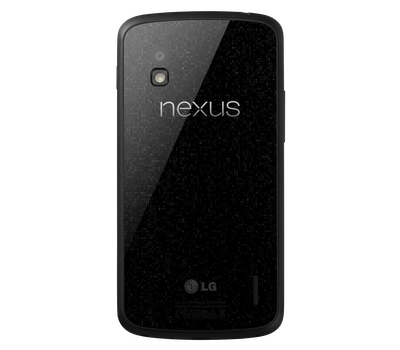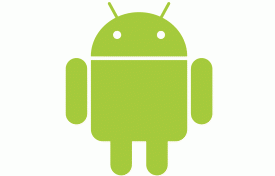
A week ago, a small, unassuming, but long-awaited package sat at my door. True, it was just a phone; but Google’s Nexus 4 was a trip into uncharted territory for me. The Nexus 4 was to be my second phone with an Android operating system. My first was a HTC EVO Shift, which I really liked up until several months ago. There has been a considerable slowdown with newer apps on it, not to mention the dead spot that developed directly in the center of the touch screen. But then again, I’ve had it for nearly two years — it was time to get a new phone.
I have weighed a lot of options over the past three months or so. I’ve been with Sprint for two years, and though they have been overall satisfactory, the monthly bills seem to be ridiculous. Granted, I knew what I was getting into when I signed the contract, but if I add up my bills over the last two years for my wife and me (not counting the up-front cost we paid for the phone), it comes out to around $3,500. That’s a lot of Chipotle burritos!
My first goal was to try to save some cash. Looking at all of the major carriers (Verizon, AT&T, Sprint, T-Mobile), I found that monthly bills come out to about the same amount; which over two years would still leave us out about $3,500 with a two-year contract, and again, that’s not counting the cost of the phone.
Right about the time I started comparing rates, I heard about Google’s new phone that was revealed: the Nexus 4. The difference with this phone (and previous Nexus phones) is that they come “unlocked” by default. “Unlocked” means that the phone is open to any carrier that supports its hardware; which, in the Nexus 4’s case is carriers that use AT&T and T-Mobile towers in the US (GSM for all of you nerds out there, contrasted with Sprint’s and Verizon’s CDMA). What does that mean to the average person? “I don’t like my carrier for some reason or another, so I’m going to take my phone, and go with someone else.”
The major contract carriers are very savvy with their pricing scheme. They will take, for example, a $650 iPhone, and sell it to you for $200 if you sign a two-year data contract with them. You all know what I’m talking about. And it’s the same for Android and Windows phones too. In other words, the carriers will subsidize the cost of the phone with a much-higher-than-cost monthly bill; and if you’re strange enough to cancel your contract before it is over, they will rightfully charge you a $100+ early termination fee: again, to subsidize the cost of the phone. It kind of reminds of back in the early 2000’s when a place like Best Buy would sell you a computer for $300 if you sign a two-year contract with AOL through them. This is a familiar business practice. I am not criticizing their marketing strategy, but I did have to ponder this question: “Is this strategy the best for my situation.” I did the math. I checked it twice. I thought I could do better.
That’s when I read a very well-explained article by JR Raphael titled Google’s Nexus 4: Understanding your carrier options. This article floored me. It had to be one of those “too good to be true” things. Prepaid might actually work for us. My first thought was, “but prepaid is junk.” I think that we’ve all come to trust the major contract carriers, and accept the idea that contract is the best and only way to go — except for Obama phones. I always used to think that prepaid was only for people who needed a temporary phone for cheap.
Like JR Rapael’s article suggested, I researched T-Mobile’s monthly 4G service first. It sounded great, and for how much my wife and I talk on the phone itself (not that much), the plan might work: and for only $30-$40 per phone a month for unlimited data (but only 100 talking minutes)! My bubble was burst pretty quickly, though. A friend from church mentioned that T-Mobile might not have good coverage in our area. I looked at the T-Mobile coverage map, and they were 100% correct. T-Mobile coverage is horrid in southern York County. If they had better coverage, I would consider it, though.
 Next I moved to researching Straight Talk (they “piggy-back” on several major carriers’ towers). Their plans are technically only sold at Wal-Mart right now, but they claim unlimited data, text, and talk for only $45. That sounded pretty good to me. I did the math in my head, and even if I rounded up from the actual $90 a month to $100 a month, that would save us about $70! Over two years, that’s over $1,500!
Next I moved to researching Straight Talk (they “piggy-back” on several major carriers’ towers). Their plans are technically only sold at Wal-Mart right now, but they claim unlimited data, text, and talk for only $45. That sounded pretty good to me. I did the math in my head, and even if I rounded up from the actual $90 a month to $100 a month, that would save us about $70! Over two years, that’s over $1,500!
The catch with pre-paid/monthly plans is that you have to buy your phone outright. The monthly payments do not subsidize the phone’s cost. If, for example, you want to buy a new iPhone and use it with Straight Talk, you better be willing to fork over $650 to Apple right now. I can sum it all up this way: pay a lot up front, pay less over the long-term — or pay a little up front, pay more over the long-term. I’d say its all up to your preference.
This is where the Nexus 4 comes into play. It’s cost is half-that of other phones with comparable hardware. Compared to the iPhone 5 and Samsung Galaxy S III, it is even better in some aspects, but at least equal. On top of that, I like the idea of a “pure Android” phone. That means there’s no silly “Sprint Nascar Cup” app that you can’t uninstall. It is just Android without the added bloat of pre-installed software. Nexus phones are also nice because they are the first phones to get operating system upgrades when Google releases them.
And about the Nexus 4 itself: I love it! This is not going to be a very technical overview — mostly all a layman’s opinion. The phone is so light-weight compared to my old EVO. The screen is as clear as I’ve seen. It is difficult to compare it to other Android devices I’ve owned; the difference is night and day. When I compare the speed, clarity, camera, usability, and other features to other devices (Droid Pro [work], EVO Shift 4G, and I guess I can count a Kindle Fire), it surpasses everything by far. I love the integration with Google and all of its services, including Maps, GMail, Google+, and others. I’ll see if I still like it this much in a few months. I think I will…
My journey with Straight Talk began when I purchased a compatible SIM card from Wal-Mart, as well as a phone for Andrea (she got a Samsung Galaxy Proclaim, which she likes a lot so far). Everything went fine without any real hitches, until I tried to activate my phone. Honestly, it was my own fault that I messed up the SIM card by activating it incorrectly (next time, I should follow instructions). Straight Talk’s customer service was okay. When I was able to talk with the right people about my somewhat odd issue, they were nice enough to send me a new SIM card at no charge (they only cost $15 anyway), and credit me back the five days of service that I lost. Yesterday, I was finally able to activate it. So far, I’ve gotten a lot better service than I had with Sprint at my home, and on an evening trip I drove to Baltimore last night. I don’t have a lot to judge by yet, but I’m very satisfied so far with the speed and coverage.
Here’s the math.
- First, I’m one of those weird people who cancelled their Sprint contract two months early. That costed us $100.
- Then we paid $300 for my Nexus 4, and $150 for Andrea’s phone — I guess you could count those as expense, but then again, I still would have paid at least $200 for a phone comparable to the Nexus 4 on contract. So, I figured that Andrea’s phone would be free on contract, and mine would be $200. That means I paid about $250 more up front for phones off contract.
- This leaves me at $350 more than a contract so far. Add in the $15 dollars for the Straight Talk SIM card for my phone, and that puts me at $365.
- Add in service for a month for two phones on Straight Talk ($90 total), and that brings us to $455 up front.
How long does it take for “return on investment” then?
- Assuming I would have paid $160 per month with Sprint, that’s a difference of $70 per month versus Straight Talk.
- That means I make up the up-front cost by June. After that, its pure savings. Some might even argue that I can take out the $90 dollars for the first month of Straight Talk because I would pay for a month of service with Sprint anyway. That means my real up-front cost would be $385, giving me a return-on-investment in May instead of June.
- When you add it all up, Straight Talk saves us almost $1500 over 24 months, even when you count the initial investment. On top of all that, if I sign up for auto-payment through Straight Talk, I can currently save an extra $5 a month.
You may ask how I justify paying the $100 in early termination fees for Sprint. I was originally going to wait until late March to avoid the fee, but after I did a little math, I found out, on a month by month basis, we save $140 by switching to Straight Talk two months early. So, by taking the early termination fee of $100, and subtracting that amount from the $140 in savings, we still gain $40 by early termination. Add in the fact that Andrea’s old phone was literally falling apart, and I’d say we had a feasible justification 🙂
On a final note, I did read some articles about Straight Talk’s “unlimited” data, and it sounds like they will arbitrarily throttle you (lower your speed) if you start using 2GB+ of data in a month, but I don’t think I’ve ever even used 1GB in a month. This piece doesn’t really effect Andrea and I much. I could see if you stream things constantly that this might worry you, so if this is a concern, I’d look more deeply into it.
Over the next few months, I’ll test the whole Nexus 4 on Straight Talk thing out, and report back on what I’ve experienced. I cannot guarantee that Straight Talk will even be great. I mean, their website has major style issues right now — think 2001 web design! I can say, as it stands, though, I have been happy with them. The really nice thing is that if I want to switch to a different carrier or plan in a month or year, I can — without any penalties or fees. I’d call that pretty liberating…
Edit: A couple months afterwards, I am still enjoying the plan I’m on.



 Next I moved to researching Straight Talk (they “piggy-back” on several major carriers’ towers). Their plans are technically only sold at Wal-Mart right now, but they claim unlimited data, text, and talk for only $45. That sounded pretty good to me. I did the math in my head, and even if I rounded up from the actual $90 a month to $100 a month, that would save us about $70! Over two years, that’s over $1,500!
Next I moved to researching Straight Talk (they “piggy-back” on several major carriers’ towers). Their plans are technically only sold at Wal-Mart right now, but they claim unlimited data, text, and talk for only $45. That sounded pretty good to me. I did the math in my head, and even if I rounded up from the actual $90 a month to $100 a month, that would save us about $70! Over two years, that’s over $1,500!

